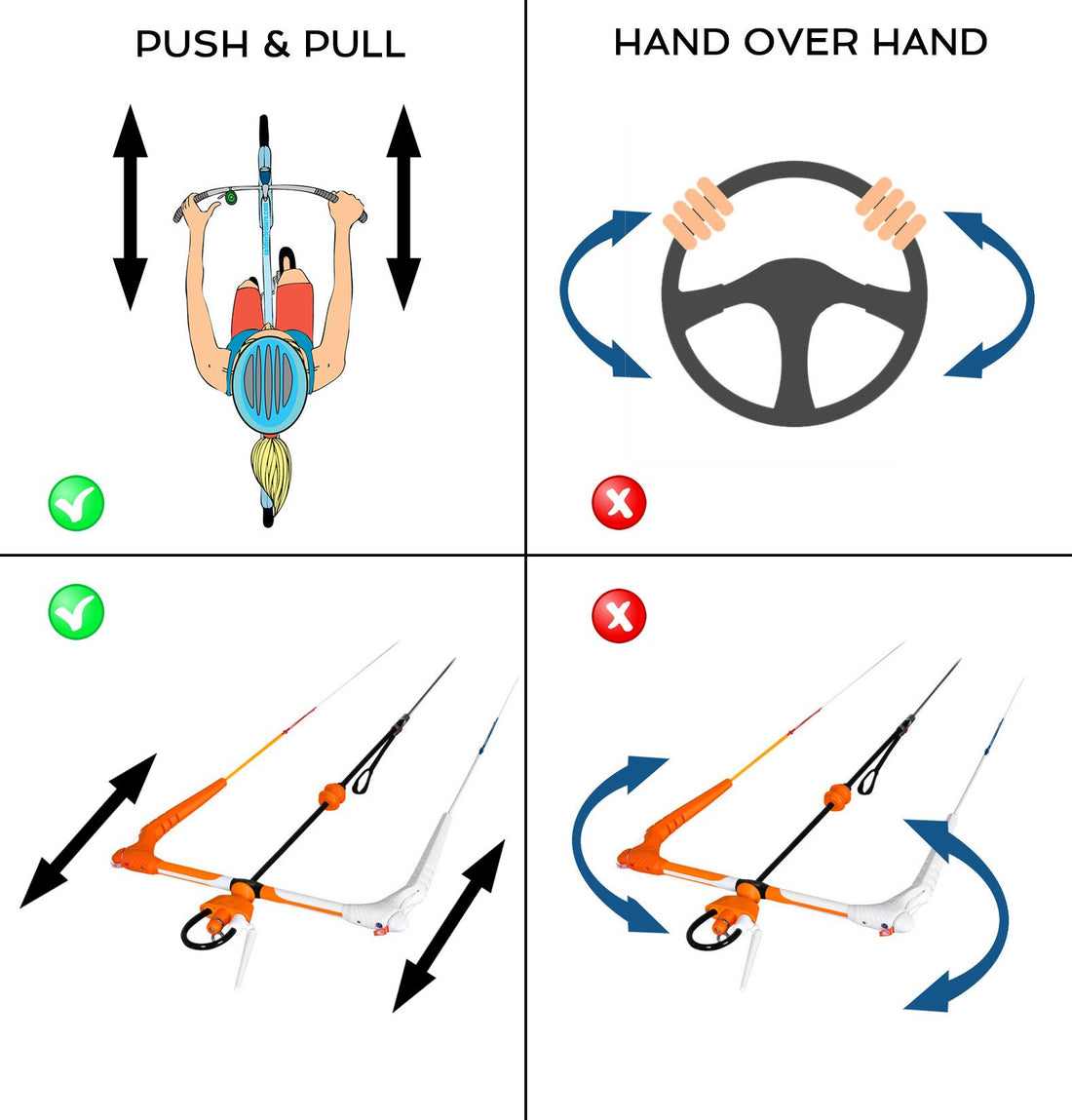
Kite Control Basics
Share
It's like riding a bike.....
Steering:
Steering the kite is caused by lengthening and shortening the outside lines. It is very similar to riding a bike. By pulling one side and pushing the other, the kite will steer in the direction of the hand that is pulled.
What's the most common mistake when steering?
One of the most common mistakes is that people turn the bar like a steering wheel in a car. This does not change the line length. The proper way is to steer the kite like you would ride a bike. Don't drive the car. Changes in line length cause the kite to move from one side to the other.

Listen up!....
It’s important to be aware that flying a kite, whether it is large or small, is all about finesse. A kite is a gentle giant. It responds to the input that you put into it. If you are aggressive the kite will deliver that aggression back to you 10 fold.
Be gentle!...
It is best to steer the kite with small movements and to keep the hands close to the center of the control bar. This will ensure that you do not over steer the kite. Oversteering or flying with too large of movements will cause the kite to move fast and fly deep into the powerzone of the wind window.
Counter steering:
“To every action there is an equal and opposite reaction” - Isaac Newton
We went over steering which initiates the movement of the kite. Counter steering stops the kite in the position of the wind window that we desire. This is crucial for all of the movements of the kite.
From landing the kite, parking the kite (keeping it in one place), power strokes, jumps, transitions, etc, counter steering the kite is equally important as steering so you must focus great deal on countering the kites movements as well as initiating them.
Sheeting (powering or de-powering the kite):
Say what?!...
A sheet is a rope that pulls the sail on a sailboat into the wind. Sheeting the sail in by pulling the rope, shows the sail to the wind, causing the wind to push the boat. A kite works very similar to sailboat. Instead of the fixed position of the sail (the mast) being on a vertical plane, a kites fixt position (leading edge) is on a horizontal plane.

The basics....
When you pull the bar in you are tightening the back lines which is pulling the kite down into the wind, this creates more power. As the back lines are tensioned, the steering is also more responsive. Pushing the bar away makes the back lines slack, de-powering the kite and making the kite less responsive.
Tune your gear!!!
In light winds, when underpowered, or if the kite is not tuned properly, pulling the bar in all of the way to the chicken loop can cause the kite to back stall, especially towards the edge of the wind or during re-launch. If you see the kite falling backwards (trailing edge first towards the powerzone) it is back stalling. Push the bar out to start it flying forwards again.
*Be prepared to get pulled because the kite will generate a lot of power when it begins flying forward again. Once it is at the edge of the wind window, you can pull the bar back into the “sweet spot” regain steering control.
The sweet spot:
The sweet spot is the the position of the bar on the depower rope when the pilot feels the first bit tension in the back lines. Because the wind is variable, the position of the bar will also vary on the depower rope as this wind gusts and lulls.
Keeping the bar in the position is crucial because this is the position where the kite is not pulling the rider but is also under control. The best way to keep the par in the position is to keep the tension in your fingertips.
Do not use a death grip on the bar!
Keep your hands forearms, and biceps relaxed. By doing this your arms will act like shocks in a car as the wind changes. Pulling the bar in (tensioning the lines; sheeting in) past the sweet spot, the kite will begin to produce power. Sheeting out to far will cause the kite to be unresponsive or may cause the kite to fly out of the wind window and stall.
Things to consider:
-
Flying the kite is 80% of kiteboarding in the beginning stages of your progression so becoming a master at kite control will ignite your progression and keep you safe.
-
Keeping the bar in the sweet spot and not over sheeting (pulling the bar in too much) will make controlling the kite much easier and relaxing.
-
Keep the tension of the lines in your fingertips.
-
Stay relaxed in the forearms and biceps.
-
Let the weight of your arms keep the bar in the sweet spot.
-
Steering is more important then sheeting because you must always be in control of the kite.
Next Step:
Its now time to move into the water and learn the art of body dragging!

1 comment
My kit leaks air I’m in New York where to get it repaired also your information is great that you very helpful